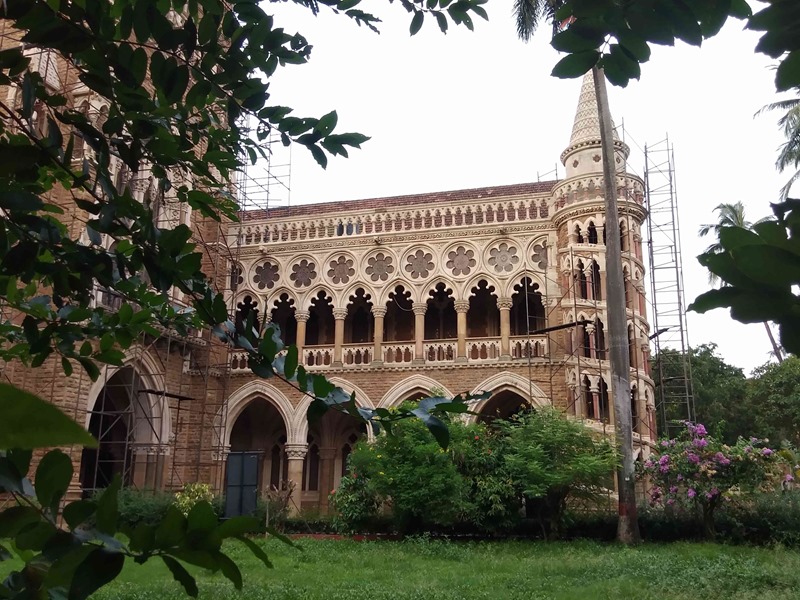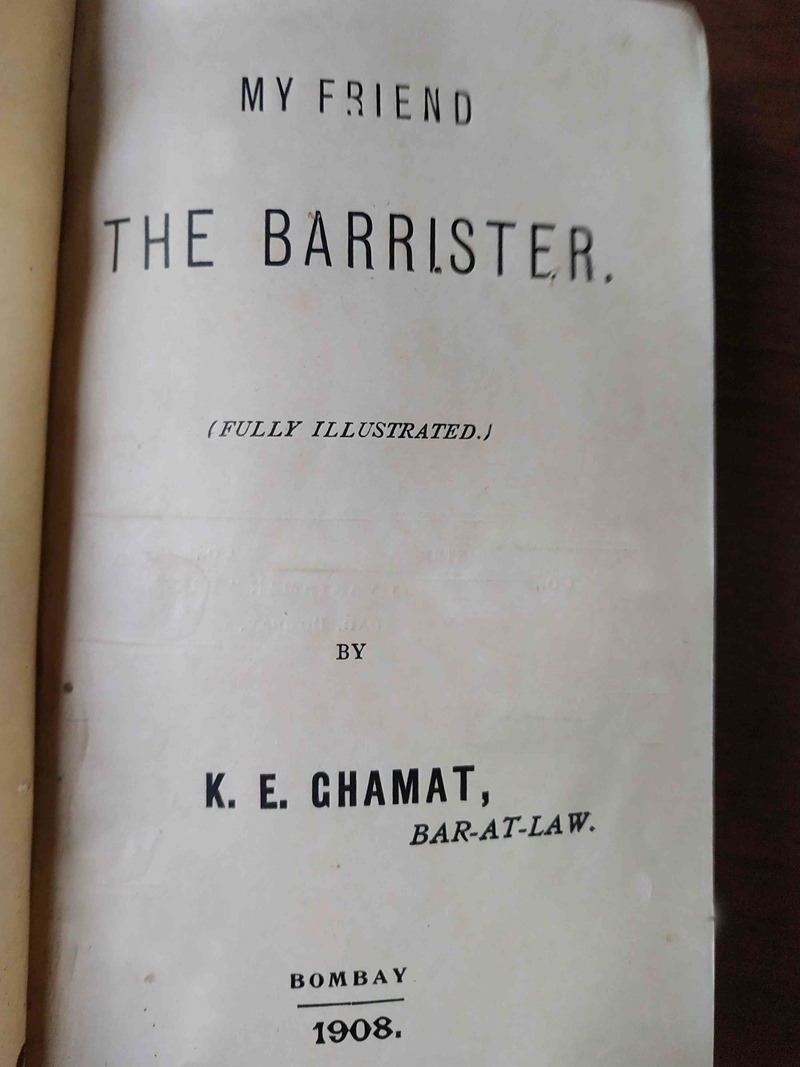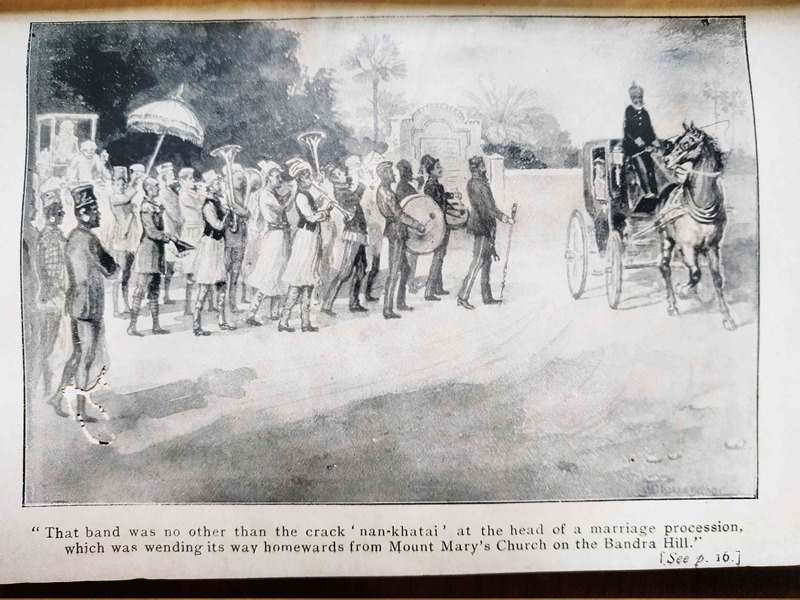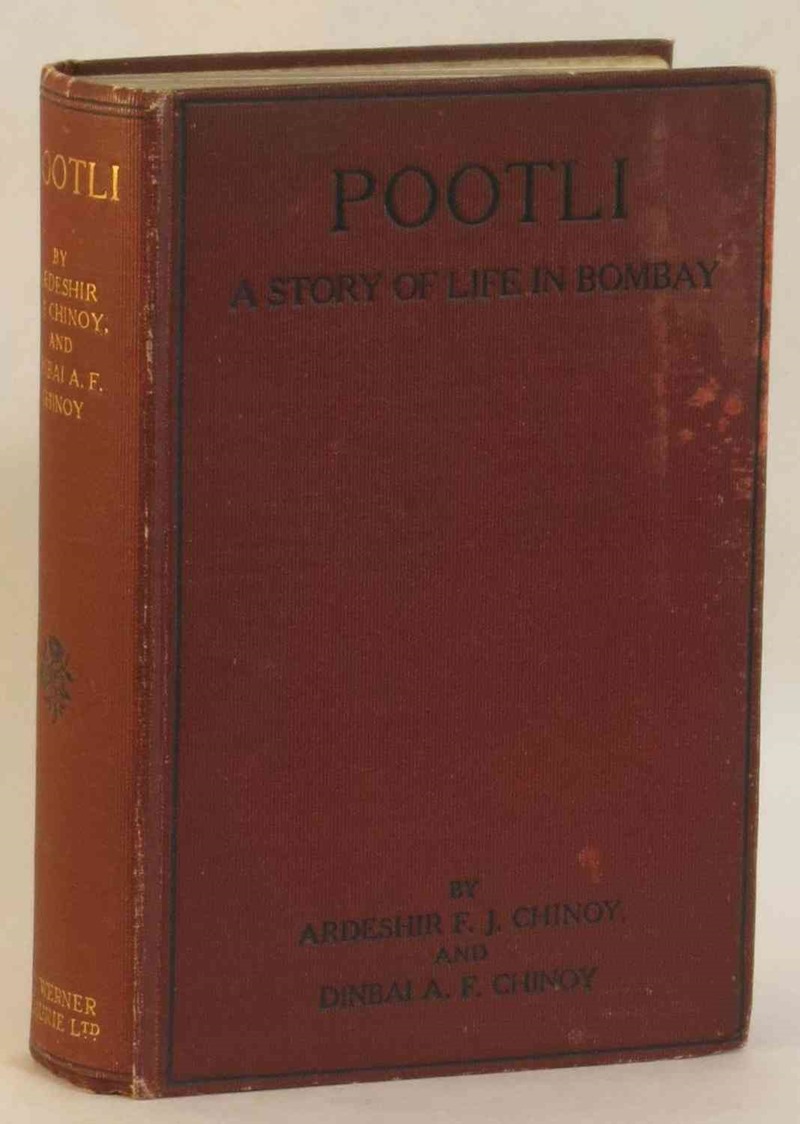The histories of the novels ‘My Friend, The Barrister’ and ‘Pootli, A Story of Life in Bombay’
The library of the University of Mumbai, housed in an 1870s edifice flanked by the Rajabai Tower, is perhaps the grandest repository of literary treasures in the city. Shelved under its lofty vaulted wooden ceiling are the last surviving copies of many obscure Bombay publications in English, Marathi, Gujarati, Persian and Urdu.
Article by Murali Ranganathan | Scroll.in
In the early 1900s, the collection of the university library extended to barely 5,000 volumes. But, from the 1940s onwards, under the direction of three generations of master librarians – DN Marshall, B Anderson and SR Tikekar – the library began acquiring the books and manuscripts of many Bombay residents and built up a collection which has few rivals in the city. Still accessible only through huge banks of card catalogues, the library is willing to reveal its treasures to the patient researcher.
It was in this library, a few years ago, that I discovered a copy of the 1908 English novel My Friend, The Barrister written by KE Ghamat. Later, I encountered another novel, Pootli, A Story of Life in Bombay by the husband-and-wife team of Ardeshir FJ Chinoy and (Mrs) Dinbai AF Chinoy. The plague epidemic which raged in Bombay for over a decade from 1896 is a significant character in this 1915 novel which starts thus:
“Ten miles distant from the picturesque city of Bombay, and separated from it by the Mahim Creek, stands the peaceful and healthy suburb of Bandora [Bandra]. Its two hills, one running to the north and the other to the south, are dotted over with pretty villas, surrounded by well-laid-out gardens and tenanted mostly be Europeans and Parsis.
During the first outbreak of the plague in Bombay in 1896, Bandora, which was then little known, soon became a place of refuge for the panic-stricken inhabitants of Bombay, which presented a spectacle more or less similar to that of London in the dark days of the Black Plague. The panic was so severe that whole streets were deserted, schools had to be closed, and college-lectures delivered before more or less empty benches.”
The library of the University of Mumbai. Photo by Ganesh Raghuveer.
Set in the two decades before its publication, the novel’s wide cast of characters are drawn into a web of relationships only to be separated by disease and death. My Friend, The Barrister also begins with an account of a dreaded but more familiar disease – the small pox – while describing the childhood of the protagonist, again “in the picturesque but now over-crowded suburb of Bandra.”
“When seven years old a serious malady befell poor Rustim or Russy as his parents endearingly called him. The attack was severe, and his life was in peril. The aid of guardian angels was invoked and vows were made. The mother became frantic and the father, disconsolate. Their darling son was in the grip of death. The best of physicians were called in, and money was not spared.
By degrees the child recovered. The recovery was miraculous, since the liver had become obstinate, and had threatened to strike work in consultation with its friend the kidney. It was an achievement for modern science, and the doctors congratulated themselves. The mother, however, ascribed the recovery to the kindly offices of the guardian angels. Perhaps she was right. Perhaps the doctors were right.”
These two books were the first novels to be written in English by Parsis.
Writing in English
A select number of Parsis had been conducting their business correspondence in English from the early 1800s, and perhaps even in the eighteenth century. By the 1830s, the language was being used for non-business purposes as Indians became editors of English newspapers. In the next decade, English travelogues written by Parsis for a chiefly European audience were published in London. The first was the Diary of an Overland Journey from Bombay to England, and of a Year’s Residence in Great Britain (1840) by Ardaseer Cursetjee Wadia.
Parsis soon began to explore other genres of literature, poetry being the foremost. By 1900, there was a substantial number of Indian readers for writing in English, though Gujarati was the language of choice for an overwhelming majority of Parsis. Poets like Behramji M Malabari (1853-1912), whose The Indian Muse in English Garb (1877) had attracted critical attention, began to achieve a measure of fame.
Malabari himself went on to write prolifically in English, besides editing The Indian Spectator, an Indian nationalist journal. Cornelia Sorabji (1866–1954), the first Indian lady advocate, began writing short stories in the 1890s, which were collected under the title Love and Life beyond the Purdah (1901). Though, as a woman, she was debarred from pleading in courts, she made important contributions to the rights of Indian women in a long legal career that spanned three decades. She also wrote prolifically in English and published two autobiographies and a memoir of her parents.
The novel as a genre appears rather late in most Indian languages. It was only in the last third of the nineteenth century that writers began experimenting with this form. The famous Bengali novelist Bankim Chandra Chatterjee’s first attempt in fiction, Rajmohan’s Wife (1864), was in English before he switched to Bengali. There were others in Calcutta and Madras who tried to write English novels before 1900.
It was, however, only in the twentieth century that the Indian novel in English began to take shape and it was influenced by contemporary events. In Bombay, the plague had impacted every aspect of life so deeply that it could not be ignored. Neither could the charged political and social situation in the country.
Experiencing racism in India
Kaikhosroo Edaljee Ghamat, a witness to the increased political activity and the rise of the Congress in the previous two decades, was deeply concerned with the political developments of the period. He may have closely followed the careers of other Parsis like Dinshaw E Vachha and Pherozeshah Mehta. One of the issues which agitated Indians was the attitude of Europeans, then referred to as Anglo-Indians, towards the natives of India. During the best of times, it could be dismissive but often enough, it was downright obnoxious.
A combination of racist prejudice and unfair laws had made the situation intolerable in a climate where Indians were beginning to fight for their rights. Their experience in India was in sharp contrast to their experience when they travelled to London and elsewhere in Europe. As early as the 1870s, the Bombay nationalist Nowrozjee Furdoonjee had caused “consternation in Simla and Calcutta by publicly speaking out against racist British attitudes towards Indians,” notes the historian Dinyar Patel.
Ghamat hoped that closer personal interactions between the two communities would mitigate any misunderstanding that might have prevailed between them. In 1906, he wrote and published a Gujarati book titled Hindustanni haalni halat ane Anglo-Indian ne ek appeal (The present condition of Hindustan and an appeal to Anglo-Indians) to present his ideas.
Interracial alliances
While members from the two communities could invite each other to their social gatherings and private parties, Ghamat went one step further in his book by advocating romance and marriage between them. This was an altogether revolutionary idea for the early twentieth century. At a time when there was hardly any public interaction between the sexes, the suggestion of romantic alliances between the races would have certainly raised many eyebrows.
Perhaps the first prominent Parsi to carry on a liaison with an Englishwoman was Ardaseer Cursetjee Wadia (1808-1877). Belonging to the Wadia clan of shipwrights, he was an engineer par excellence. Among the many firsts to his credit were the first privately built steamship in India (1833) and the first gaslights of Bombay (1834). As noted earlier, Wadia stayed in London for a year in 1840 and was the first Parsi to publish a travelogue in English. In the following year, he became the first Indian to be elected a Fellow of the Royal Society.
Wadia was a frequent visitor to London in the 1850s. It was during one of these visits that he likely met Marian Barber with whom he became romantically involved. She seems to have followed him to Bombay where she gave birth to two of their three children. After a brilliant career as an inventor and engineer in the Bombay Dockyard, Wadia retired on a generous pension and permanently settled in the UK with his British family in 1859.
As his first wife Avabai was still alive, he never formalised his relationship with Marian Barber. Even though his professional achievements were of the highest order, his name was frequently expunged from Parsi biographical records and no mention was made of his second family. The affair caused great scandal in Bombay.
It therefore did not take long for rumours to circulate among the Parsis of Bombay that Dadabhai Naoroji had married a European lady when he first went to London in 1855 to establish a trading business. Naoroji was at great pains to publicly deny this accusation in the Gujarati newspaper Rast Goftar when he returned to Bombay in 1858.
Four decades later, for a Parsi to suggest inter-racial alliances in the early 1900s was to launch a frontal attack on the social mores of the day. It was also in direct opposition to their interpretation of Zoroastrianism, which forbade the initiation of the progeny of such marriages into the religion. In his appeal to Anglo-Indians, but written in Gujarati, Ghamat asked that they voluntarily change their attitudes to Indians and establish personal and friendly relations with them.
Title page of My Friend, The Barrister.
An autobiographical novel
The appeal, like many others before it, seems to have gone unheeded. This prompted Ghamat to alter his strategy: he would write in English and present his ideas in the garb of fiction. In January 1908, Ghamat self-published My Friend, The Barrister, where he “ventured to step out of the prosaic domain of law to revel for a while in the romantic regions of fiction”. Priced at a rupee and a half, the bookseller DB Taraporevala advertised it on the front pages of the Times of India (2 April 1908).
THEY ALL HAVE READ
THE HIGHLY SENSATIONAL
PARSEE NOVEL,
MY FRIEND, THE BARRISTER
BY A PARSEE BARRISTER-AT-LAW.
INTERMARRIAGES BETWEEN THE PARSEES
AND THE ENGLISH.
Ghamat could not resist including a preface to the novel:
“I have attempted to point out some of the ugly pitfalls of the Administration, and to depict the prejudice and distrust which unfortunately exist in the minds of not a few Anglo-Indians against the people of India, and which are assiduously kept alive by inflated, insidious and one-sided criticism constantly appearing in a considerable number of Anglo-Indian journals, supplemented by unwise utterances of a few officials moulded in the pernicious cast of racial superiority, infallible judgment and self-interestedness.
There are perhaps no other people on God’s earth who are more mercilessly misjudged and thoughtlessly maligned at the present day than the Indians, and unless the mist of prejudice and distrust against them, is raised, there can be, I am afraid, no guarantee that the political horizon of India will always remain free from threatening clouds of discord, dissension and turmoil.”
Ghamat’s novel seems to be largely autobiographical. In 1888, a 21-year-old Ghamat went to London after his graduation from the University of Bombay to study law. At London, he kept terms at the Middle Temple and qualified as a barrister in 1891. He was an exact contemporary of MK Gandhi and it is possible that, as fellow Gujaratis, they may well have come into contact in London, a connection they could have even renewed in Bombay in the 1890s when both of them were just beginning their professional life. Ghamat came back to India to practise law, first at the Thane district courts, before joining the Bombay Bar in 1904.
Following in the footsteps of Ghamat himself, the protagonist Rustim, after a sunny suburban childhood marred only by smallpox, prepares to leave Bombay to study law in London. “Friday, the 10th day of August 18 – was fixed for Rustim’s departure for England by the steamship Good Hope.” In the context of the novel, the year could only be 1888, the same year in which Ghamat himself departed.
On the ship, Rustim inevitably meets Englishmen who treat him roughly, but there are a few kindly souls on board. At London, he enjoys a congenial domestic life with his landlady’s family. Soon enough, he falls in love with an English girl, Maud Osborne, who had been brought up in India. After a few misadventures, they eventually get married. Ghamat paints a picture where this interracial marriage helps mitigate the prejudices of many Englishmen and opens up possibilities for a more harmonious relationship between the races.
Illustration from My Friend, The Barrister.
In the novel, Ghamat also accurately depicts the political situation in India. He champions the cause of the Congress and attempts to expose the conservatives, many of them Parsis, who were misrepresenting its activities. With names such as Badmash Rao, Loocha Khan, Numskull Firebrand and Constancio Upright for his characters and Highhandabad and Contentpore for the locales, Ghamat infuses an element of satire in the narrative.
Ghamat did not live long to enjoy any literary success his book might have had. He died on January 10, 1909, after a short bout of typhoid fever, which was then simultaneously raging in Bombay along with the plague. His book continued to be advertised for sale in the Times of India towards the end of the year, but without the earlier sensationalism: “Depicts Indian political situation fully and gives a splendid idea of educated and advanced Parsi social life. Fully illustrated. Rs 1-8 only. Sold by all Booksellers.”
Gujarati novel in English garb
At about the same time when Ghamat’s fictional hero Rustim was courting Maud Osborne, Ardeshir Chinoy went to London to study law. After having qualified as a barrister, he joined the High Court of Bombay on its administrative side, and in 1911, he was the Commissioner of its Affidavit Department. His wife Dinbai was one of many Parsi ladies whose writings began appearing in print at the turn of the century.
Her first book, Kelvanina Pratap (The Power of Education) was published in 1904. After a decade, she published her next book, a Gujarati novel titled Mary Madam. Though I have not been able to lay my hands on the book, it is probable that Dinbai translated this novel from Gujarati into English with the help of her husband. It was published in London by the firm T Werner Laurie as Pootli, A Story of Life in Bombay in 1915. Though the title derives from the name of one of its characters, it could have been named after many others who feature equally prominently in the book.
The Chinoys also explore the possibility of an interracial alliance in the novel. The arrogant Pootli, daughter of Rustomji Khanbahadur, is secretly engaged to be married to the flirtatious Jal. In turn, Jal fancies Lizzie Brown, the vivacious European tutor who teaches English, French and music to Pootli. Perhaps Lizzie Madam is the same character as Mary Madam from Dinbai’s Gujarati novel, who ensnares the unsuspecting young Parsi man in her coils of love.
When Jal discovers Lizzie’s devious nature, he tries to wriggle out of the relationship but ends up being blackmailed by her. He steals his mother’s jewellery and pawns it to meet Lizzie’s demands. Just as he is on the path to reformation, Jal is suddenly seized by a fever.
“The doctor was not mistaken in his diagnosis, for when he called again the same evening he observed all the unmistakable symptoms of plague, which continues to claim every year its heavy toll of victims. The fever had gone high, delirium set in, the septic bubo made its dreaded appearance, and altogether Jal’s fate trembled in the balance.”
In an implausible transformation, a repentant Lizzie turns into a volunteer nurse who ministers to the needs of her jilted lover. Jal seems to be on the path to recovery but is racked with guilt about the theft he has committed and eventually succumbs to the disease.The novel features other characters, such as orphans who “were reduced to poverty and want by the sudden death of our parents, during the first outbreak of the deadly plague.” In a sub-plot, the Chinoys also explore widow remarriage among the Hindus.
Both the novels are profusely illustrated. Ghamat availed the services of the famous Bombay artist MV Dhurandhar, while the illustrator of Pootli remains anonymous.
Pages from ‘Pootli, A Story of Life in Bombay
Literary heritage
It would be easy to slight the pioneering literary efforts of Ghamat and the Chinoys. The Spectator of London dismissed Pootli in one sentence in its January 1916 issue: “The authors of this novel may have a most accurate knowledge of life in Bombay, but they certainly cannot write good English.” This is not unfair criticism.
To a lesser degree, the same could be said of My Friend, The Barrister. The novel has a weak plot and Ghamat makes his characters mouth long speeches that he himself may have wanted to deliver.
The plodding and predictable narrative, stilted dialogue, an unwieldy cast of characters with their one-dimensional characterisation would certainly not qualify the two novels as great works of literature even when they were published. However, after a hundred years, these early novels have acquired the gravitas of a rich historical source. Their depiction of upper-middle class life in suburban Bombay gives us a peek into a slice of Bombay society when it was at the cusp of modernity.
Over the course of the twentieth century, more and more Parsis took to writing in English and by the 1950s the community had all but abandoned their primary language Gujarati. Vaulting over writers like MM Banaji from the 1920s and DF Karaka from the 1940s, a star cast of Parsi novelists such as Rohinton Mistry, Farrukh Dhondy, Bapsi Sidhwa and Firdaus Kanga now write in English for an international audience. We may not have to wait too long for a realistic portrayal of the surrealistic world we currently live in.
This series of articles on the impact of the coronavirus pandemic on publishing is curated by Kanishka Gupta.





